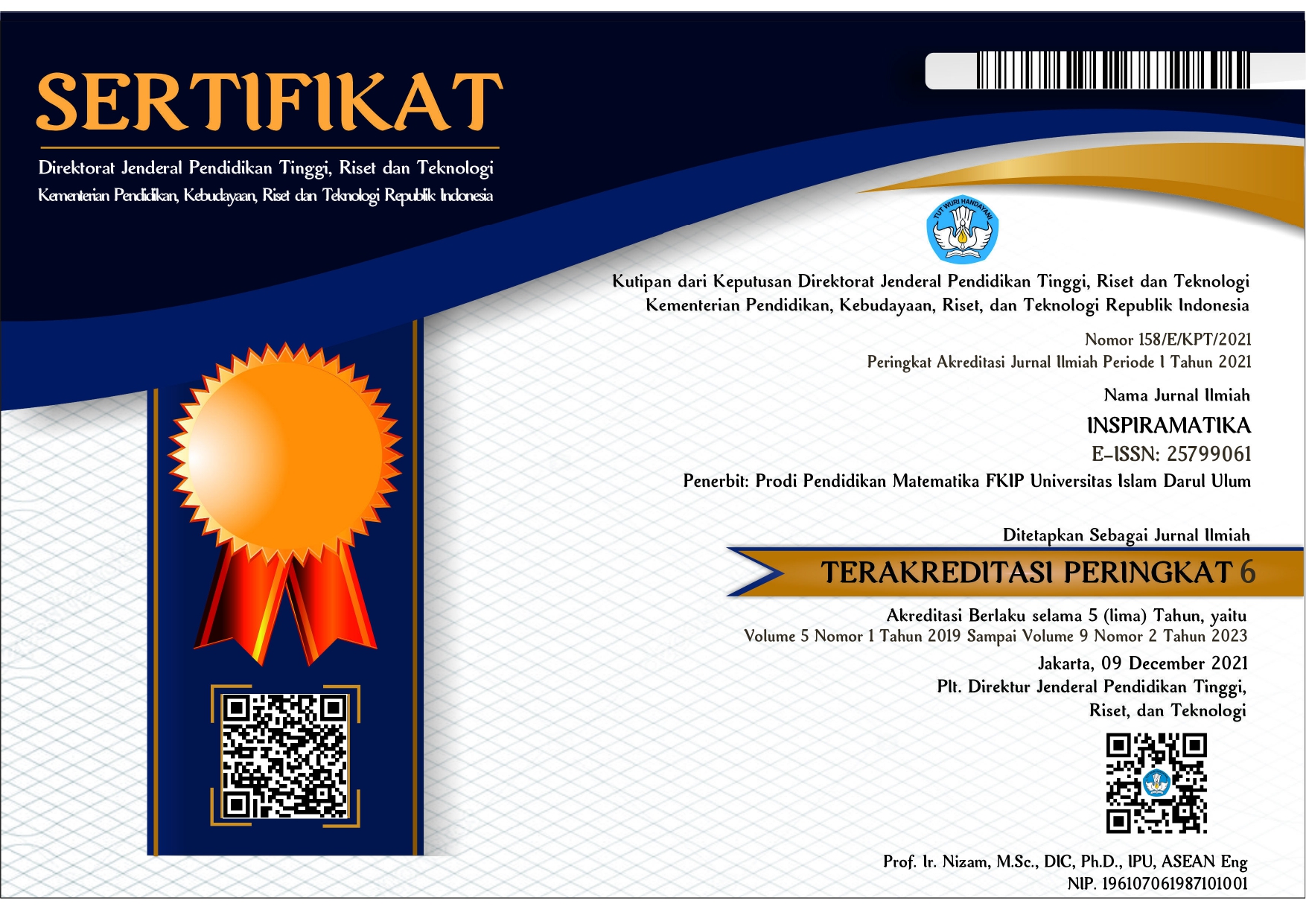ANALISIS KREATIVITAS SISWA DALAM MEMECAHKAN MASALAH MATEMATIKA DITINJAU DARI PERBEDAAN GENDER
Abstract
This study aims to identify and describe students' creativity in solving mathematical problems in terms of gender differences. The type of research used is qualitative research with a descriptive approach. The research subjects consisted of 6 people, namely 3 male students and 3 female students, each representing the high, medium, and low categories. The instrument used in the form of a student creativity test, totaling 3 questions that have met the validity test and to further explore information about students' creative abilities, interviews were conducted. The data analysis techniques used are data collection through creativity ability tests and interviews, data reduction, data presentation, data verification and drawing conclusions. The results showed that the description of the creativity ability of male subjects in solving mathematical problems based on categories were (1) subjects with high categories were able to meet 2 indicators of creativity including fluency and flexibility, (2) subjects with medium categories were able to meet 1 indicator of creativity, namely fluency, (3) subjects with low categories are able to meet 1 indicator of creativity, namely fluency. The description of the creative ability of female subjects in solving mathematical problems based on categories is (1) subjects with high categories are able to meet creativity indicators which include fluency, flexibility and novelty, (2) subjects with moderate categories are able to meet creativity indicators which include fluency and flexibility, (3 ) subject with low category is able to fulfill 1 indicator of creativity, namely fluency indicator.
Downloads
References
Aziz, R. (2006). Studi tentang Kreativitas Pada Siswa Sekolah Menengah Pertama di Kota Malang. Psikoislamika, 3(2), 829-5703.
Fakih, M. (2013). Analisis Gender dan Transformasi Sosial. Yogyakarta: Pustaka Pelajar.
Febryana, D. (2018). Profil Kreativitas Siswa dalam Menyelesaikan Soal Segitiga dan Segiempat Ditinjau dari Gender. Suska: Jurnal of Mathematics Education, 4(1), 50-58.
Indrawati, N. & Tasni, N. (2016). Analisis Kemampuan Pemecahan Masalah Berdasarkan Tingkat Kompleksitas Masalah dan Perbedaan Gender. Jurnal Saintifik, 2(1 ), 16-25.
Simanjuntak, E., Hia, Y., & Manurung, N. (2019). Analisis Kemampuan Berpikir Kreatif Dalam Pemecahan Masalah Ditinjau Dari Perbedaan Gender. School Education Journal, 9(3), 213-220.
Sriraman, B. (2011). The Elements of Creativity and Giftedness in Mathematics. Rotterdam: Sense Publishers.
Sumarmo, U. (2010). Berpikir dan Disposisi Matematik: Apa, Mengapa dan Bagaimana Dikembangkan Pada Peserta Didik. Bandung: FP MIPA UPI.
Utami, D. W. (2020). Menyongsong Era Baru Pendidikan Pengembangan Kompetensi TIK Guru Berdasarkan UNESCO ICT (Competency Framework For Teacher). Yogyakarta: CV Andi Offset.

This work is licensed under a Creative Commons Attribution-ShareAlike 4.0 International License.







.png)




